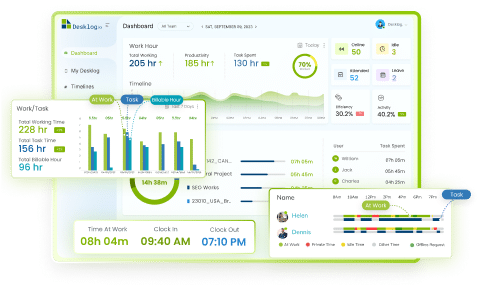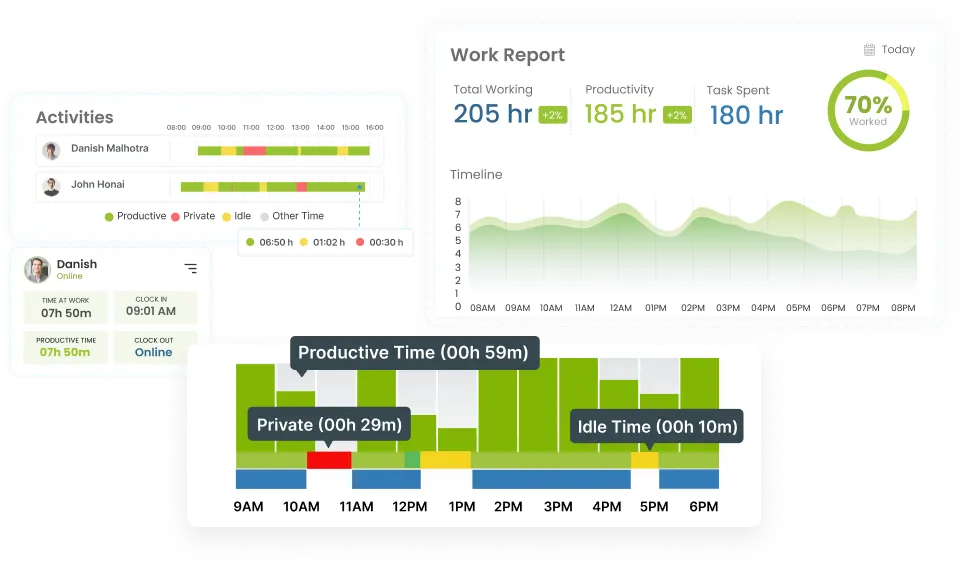In the busy realm of industry, where machines hum and coffee pots brew, the third shift hours emerge like the night owl in a field of early risers. Operating from the witching hours of midnight to dawn, this unconventional schedule isn’t just about keeping the lights on; it’s about equipping untapped potential and maximizing productivity when the world outside is blissfully unaware.
Picture this: while most are dreaming of sugarplum fairies, your team is busy turning raw materials into finished products. And with time tracking software, it’s like having a magical clock that ensures every hour is accounted for, because let’s face it, no one wants to find out that the midnight snack break lasted three hours!
But the benefits of the third shift go beyond mere productivity. Industries can tap into a workforce that flourishes in the calm of the night, often leading to lower turnover rates and higher job satisfaction. Plus, with the right time tracking tools in place, managers can easily monitor progress without needing a full-time owl on staff. Let’s learn some facts and the working flow of the third shift with us!
What is meant by Third Shift Hours?
Third Shift – A Definition
The third shift, commonly known as the graveyard shift or night shift, involves working hours that typically span the late evening to early morning, covering times when most of the world is asleep. This shift is the last of the day, usually running from around 11 PM to 7 AM, though specific hours can vary based on industry needs. It is a crucial component of a three-shift system that keeps businesses operational around the clock. It is one of the widely practiced work schedules.
What Are Third Shift Hours?
Third shift hours generally start after the conclusion of the second shift, typically beginning anywhere between 9 PM and midnight and lasting until the early morning, around 6 to 9 AM. Some workers may also engage in swing shifts, where their hours overlap between day and night shifts. The structure of third-shift work can include:

Fixed Work Hours: Predetermined hours, such as from midnight to 8 AM.

Rotating Shifts: Employees may alternate between different shifts, including third shifts.

Lesser Staff and Smaller Management Team: Often, fewer employees work during these hours, leading to a smaller on-site management team.

Unique Challenges: Workers might face challenges like maintaining a healthy sleep schedule and balancing social life.
Which Industry Utilizes Third Shift Hours?
The third shift hours play a vital role in various sectors, ensuring that essential services and operations run smoothly around the clock. Various industries utilize third shift jobs into their variety work schedules due to different demands, such as the need for emergency responses, ongoing projects, increased revenue, or constant service availability. Common 3rd shift positions include:

Healthcare
Nurses, doctors, and other healthcare professionals work overnight to provide constant patient care, ensuring critical medical services are available at all times.

IT and Tech Support
Many IT companies schedule employees for night shifts to offer round-the-clock customer support, ensuring that technical issues are addressed promptly.

Security and Law Enforcement
Officers and security personnel work through the night to ensure public safety, maintaining order and response readiness at all hours.

Manufacturing
Many factories operate continuous production lines that require third-shift workers to maintain output and meet demand, preventing downtime and improving productivity.

Transportation and Logistics
Truck drivers and warehouse staff often work overnight to facilitate supply chain operations, ensuring that goods are delivered efficiently and on schedule.
Stats; An Overview of Third shift
Night Shift Employment Data (11 PM – 3 AM)
Several industries rely on night shift workers to ensure continuous operations. Key sectors employing night shift staff include police and fire departments, manufacturing plants, hospitals, nursing homes, and transportation/warehousing.
-
Healthcare Sector:
-
27% of healthcare practitioners and technical workers work overnight.
-
19% of healthcare support workers, such as nursing assistants, also take on overnight shifts.
-
While 72% of registered nurses typically start their shifts between 5 AM and noon, 19% work evening or night shifts.
-
-
Manufacturing Sector:
-
18% of production workers, including bakers, assembly line workers, and machinists, operate overnight to boost output.
-
-
Protective Services:
-
28% of protective service workers, such as firefighters, police officers, and security guards, work overnight to ensure public safety.
-
-
Transportation and Warehousing:
-
15% of transportation and material moving workers, like truck drivers and air traffic controllers, work during these hours to facilitate the movement of goods and people.
-
Percent of Employed People Working 11PM to 3AM
By Selected Occupation Groups
Regular Daytime and Non-daytime Work Schedule by Gender
Women were slightly less inclined than men to work non-day hours, with participation rates of 15.2% for women compared to 17.6% for men. Among those with non-day schedules, women were twice as likely as men to mention better family arrangements as their reason (14% compared to 7%).
Regular Daytime and Non-Daytime Work Schedule by Gender

Regular Daytime
(Men)
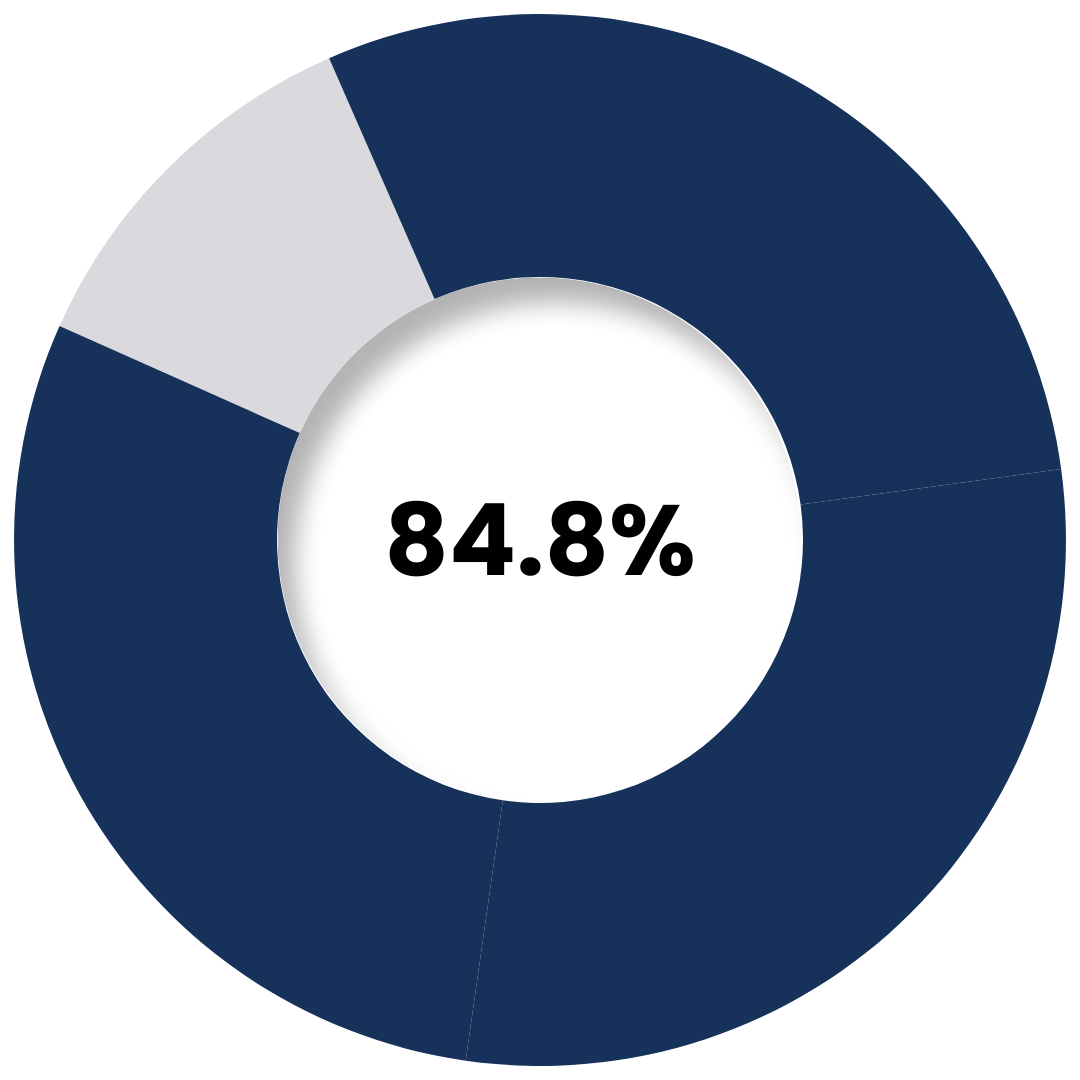
Regular Daytime
(Women)
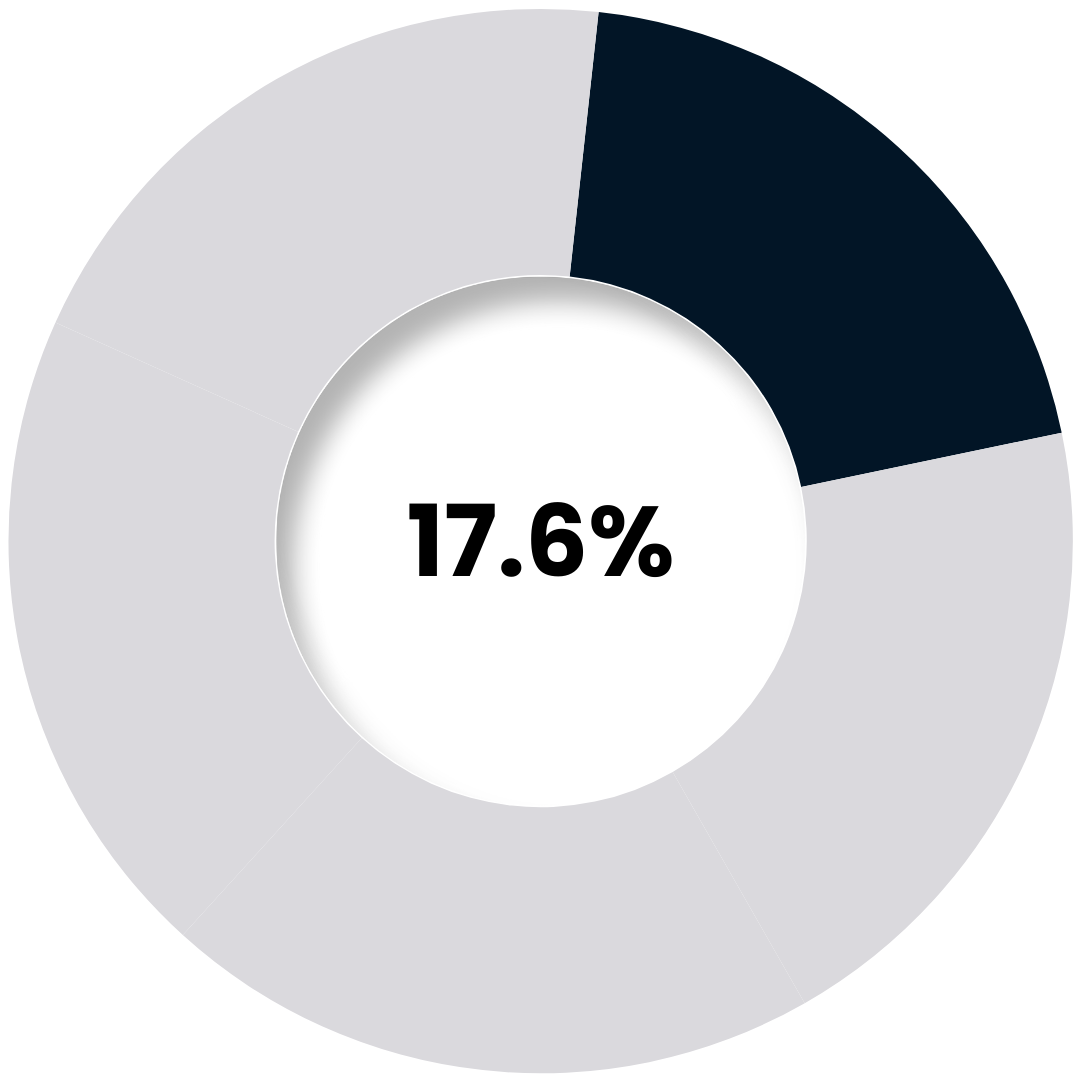
Non-Daytime
(Men)
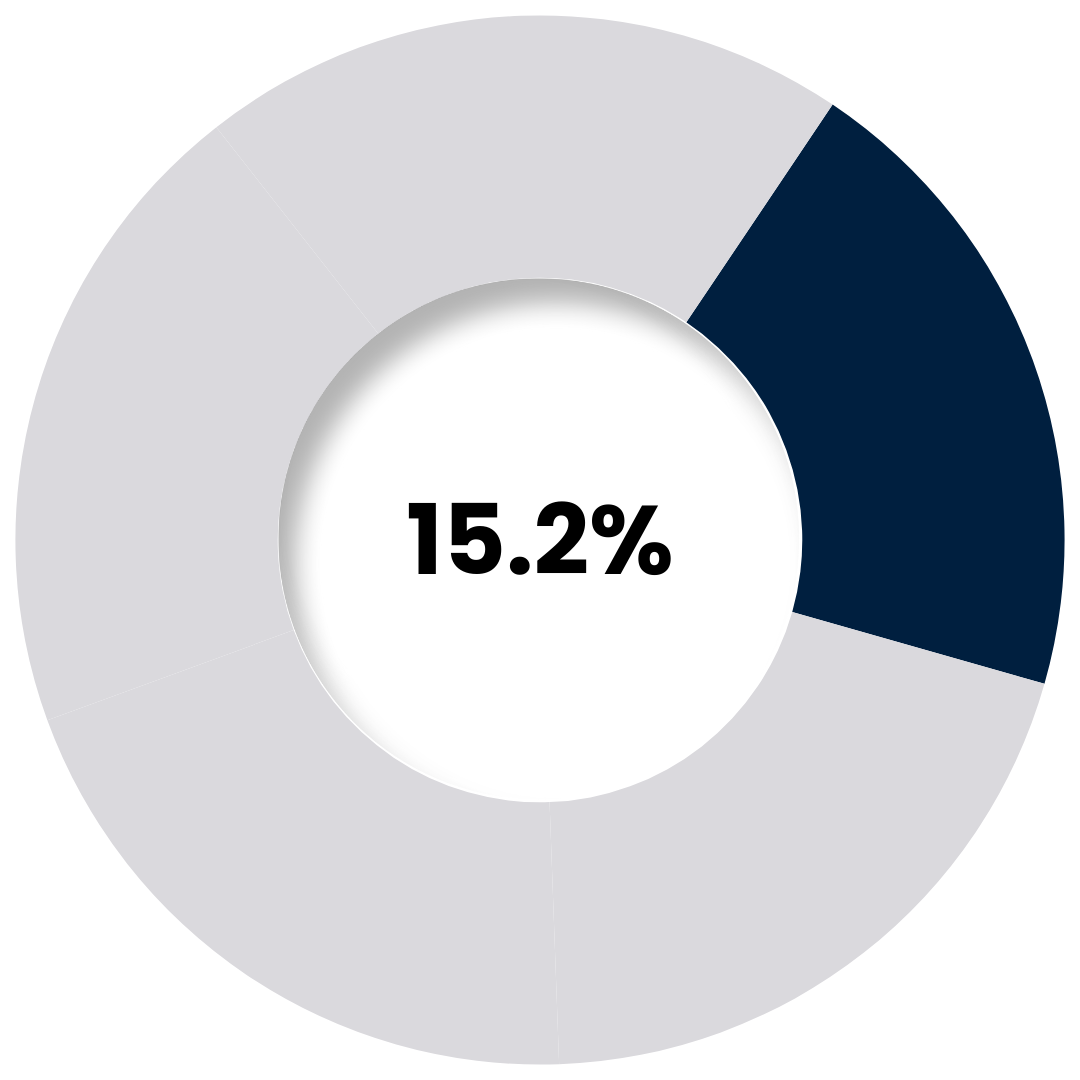
Non-Daytime
(Women)
Are you curious to learn about different work schedules?
Difference between 1st, 2nd and 3rd shifts
Work schedules in various industries are commonly divided into three shifts: 1st, 2nd, and 3rd, each with distinct characteristics. The 1st shift generally runs from morning to early evening, aligning with traditional business hours and promoting a standard work-life balance. In contrast, the 2nd shift typically operates from late afternoon to midnight, often appealing to those seeking higher pay but potentially disrupting evening routines. The 3rd shift covers late-night to early-morning hours, crucial for 24/7 operations. Overall, each shift offers unique benefits and challenges, catering to different employee needs and preferences.
A general Comparison; 1st, 2nd & 3rd
| Aspect | 1st Shift | 2nd Shift | 3rd Shift |
|---|---|---|---|
|
Other Names |
Morning Shift/Day Shift |
Afternoon Shift/Evening Shift |
Night Shift/Graveyard Shift |
|
General Working Hours |
8 a.m. to 4 p.m. (or 9 a.m. to 5 p.m.) |
4 p.m. to midnight (or 3 p.m. to 11 p.m.) |
Midnight to 8 a.m. (or 11 p.m. to 7 a.m.) |
|
Pros |
• More family time |
• Time for appointments |
• Higher pay (shift differential) |
|
Cons |
• Conflicts with non-work activities |
• Poor social life |
• Social isolation
|
|
Ideal For |
Early birds and businesses operating in mornings |
Employees productive in the afternoon and businesses with multiple time zones |
Night owls and businesses requiring nighttime operations |
|
Impact on Social Life |
Moderate; aligns with typical social activities |
Limited; works against socializing with day-shifters |
Significant; most social activities occur during work hours |
|
Health Considerations |
Generally stable; less disruption to circadian rhythm |
Moderate; can be affected by irregular hours |
High; potential for insomnia, depression, and other health issues |
|
Work Environment |
Busy during regular business hours |
Quieter, with fewer interruptions |
Often solitary, with less oversight |
Benefits of Working the Third Shift

Increase in Employee Productivity
Operating around the clock allows businesses to maximize output by extending work hours, ensuring more tasks are completed and equipment is utilized efficiently and unlocks a new box of productivity.

Reduced Employee Burnout
Distributing the workload across three shifts helps alleviate stress on first and second-shift employees, promoting better work-life balance and reducing the risk of burnout.

Enhanced Customer Service
A third shift hours enables businesses to provide 24/7 support, meeting customer needs in real-time, which can lead to increased loyalty and repeat business.

Diverse Talent Pool
Offering night shifts can attract workers who prefer non-traditional hours, such as students or caregivers, expanding the available talent pool for hiring.

Improved Safety and Security
Having staff present during late hours can deter crime, keeping businesses safer by ensuring that premises are not left empty.

Operational Flexibility
Businesses can better manage workload peaks, respond to emergencies, and adapt to unexpected changes during non-standard hours, enhancing overall responsiveness.

Cost Efficiency
Operating continuously can reduce the need for overtime and lower operational costs by optimizing resource use and minimizing downtime.

Career Development Opportunities
Smaller teams during the 3rd shift often lead to greater autonomy and responsibility for employees, fostering skill development and career advancement.
Common Challenges of Third Shift Hours

Employee Turnover Challenges
The unconventional hours can disrupt work-life balance, making it difficult for night-shift employees to maintain social connections and family commitments, leading to higher turnover rates.

Staffing Difficulties
Attracting qualified candidates for third shift positions can be challenging due to the limited pool of applicants willing to work non-traditional hours, necessitating additional incentives.

Communication Gaps
With fewer supervisors and colleagues available during night shifts, maintaining effective communication can be difficult, resulting in miscommunications and feelings of isolation among employees.

Fatigue and Sleep Deprivation
Working night shifts disrupts natural circadian rhythms, leading to chronic sleep deprivation and related health issues. This fatigue can impair cognitive function and overall job performance. Fatigue among overnight workers can lead to decreased alertness, increasing the likelihood of accidents and mistakes, which may also raise workers’ compensation claims.

Social Isolation and Personal Life Sacrifices
Third-shift workers often struggle to connect with family and friends who adhere to traditional schedules, leading to feelings of loneliness and social disconnection.

Coping with Stress, Anxiety, and Depression
The irregular hours and lifestyle adjustments can increase stress levels and contribute to mental health issues such as anxiety and depression, making it essential for employers to support employees’ well-being.

Impact on Physical Health
Long-term night shift work is associated with increased risks of various health issues, including cardiovascular disease and gastrointestinal problems, due to disrupted sleep and eating patterns.

Limited Access to Services
Third-shift employees may find it challenging to access essential services, such as healthcare or banking, which typically operate during standard business hours, complicating their daily lives.

Difficulty in Team Cohesion
The separation of shifts can create a divide between teams, hindering team building and reducing overall morale, as night-shift workers may feel disconnected from the larger workplace culture.
Have you ever heard about the 9/80 work schedule?
Tips for Employers Managing Third Shift Workers
1. Communicate Effectively

Transparent Communication:
Clearly explain the reasons for adding a third shift hours, including business needs and expectations for performance. This transparency helps prevent misunderstandings and fosters trust.

Regular Updates:
Keep all employees informed about any changes that may impact their roles. Utilize meetings, newsletters, or digital communication tools to ensure everyone stays in the loop.

Address Concerns:
Encourage questions and discussions about the new shift structure, especially regarding compensation differences. Proactively address any grievances to maintain morale across all shifts.
2. Provide Comprehensive Training

Training Programs:
Design training sessions that specifically address the challenges faced by third-shift workers, such as handling emergencies in the absence of day managers.

Operational Protocols:
Ensure that employees are well-versed in procedures for various scenarios, like managing customer complaints or technical issues, to enhance their confidence and efficiency.

Continuous Learning:
Offer ongoing training opportunities to help employees adapt to new technologies or processes as they arise.
3. Set Clear Expectations

Define Roles and Responsibilities:
Clearly articulate what is expected from third-shift employees, including specific tasks notifications, that they need to complete and key performance indicators (KPIs) to meet.

Realistic Goals:
Set achievable objectives to ensure employees feel a sense of accomplishment and motivation. Discuss these goals during one-on-one meetings or team briefings.
4. Establish a Support System

On-Site Management Presence:
If possible, have a member of the management team present during third-shift hours to provide immediate support and address any issues as they arise.

Mentorship and Buddy Systems:
Pair new employees with experienced night shift workers who can provide guidance, share tips for success, and help integrate them into the team.

Resource Accessibility:
Offer resources such as articles or workshops focused on managing the unique aspects of night work, from health to productivity.
5. Offer Competitive Compensation

Shift Differential Pay:
Implement higher pay rates for third-shift work to compensate for the inconveniences associated with working overnight.

Enhanced Benefits:
Consider providing additional health insurance options, flexible scheduling, or other benefits tailored to the needs of night workers.

Incentives for Performance:
Develop incentive programs that reward high performance or attendance, encouraging commitment and engagement among third-shift employees.
6. Promote Healthy Sleep Habits

Education on Sleep Hygiene:
Share tips on maintaining a healthy sleep schedule, such as establishing a consistent bedtime routine and avoiding screens before sleep.

Encourage Lifestyle Choices:
Promote activities like regular exercise, healthy eating, and stress-reducing practices that can contribute to better sleep quality.

Create a Sleep-Friendly Environment:
Encourage employees to use blackout curtains and other strategies to create a conducive sleep environment during the day.
7. Assess and Adjust Regularly

Regular Check-Ins:
Schedule periodic feedback sessions with third-shift employees to discuss their experiences, challenges, and suggestions for improvement.

Monitor Performance Metrics:
Assess productivity and morale through key performance indicators and employee satisfaction surveys to identify areas needing attention.

Be Open to Changes:
If issues arise, be willing to adjust training programs, management structures, or shift schedules based on employee feedback and operational needs.
By implementing these comprehensive practices, organizations can create a supportive and productive environment for third-shift workers, ultimately leading to improved performance and job satisfaction.
Learn more about; What Is a 2-2-3 Work Schedule and How to Implement It?
Let’s Track the Shift with Desklog
Time tracking software is vital for managing third-shift employees. It helps track attendance, manage schedules, and ensure accurate compensation. By providing real-time insights, it addresses the unique challenges of night shifts, improving efficiency and fostering a supportive work environment and shift management.
How Desklog Benefits the Third Shift Hours?
-
Easy Scheduling: Desklog simplifies the scheduling process, allowing managers to easily create and adjust third-shift rosters. This means fewer conflicts and better coverage, ensuring that operations run smoothly during those late-night hours.
-
Real-Time Time Tracking: With Desklog, managers can track employee working hours in real-time, providing valuable insights into attendance and productivity. This feature is essential for understanding peak performance times during the third shift hours, helping to improve employee efficiency.
-
Improved Communication: The built-in communication tools keep everyone connected, even in the dead of night. Instant time notifications about shift changes or important updates ensure that team members stay informed and engaged, reducing confusion and miscommunication.
-
Automated Reporting: Desklog generates detailed reports on employee hours and performance, allowing managers to analyze third-shift productivity trends. This data-driven approach enables informed decision-making to enhance overall operational efficiency.
-
Integration Capabilities: Desklog easily integrates with HR and payroll systems. This ensures that third-shift workers are paid accurately for their hours, reducing payroll discrepancies and enhancing employee satisfaction.
With its array of features designed specifically for third-shift management, Desklog transforms the night shift experience into a more organized and efficient. Also, provide an engaging environment and improved work life balance. By using this software, industries can seize the full potential of their nighttime workforce while keeping things smooth like butter.
Conclusion
The third shift hours offer unique opportunities for productivity, allowing employees to work during quieter hours with fewer distractions. Financial benefits like shift differentials and overtime pay make it an attractive option, while flexible scheduling provides personal freedom for daytime pursuits.
However, challenges such as fatigue, sleep deprivation, and social isolation must be addressed. Employers can play a key role in creating a supportive environment by implementing effective shift rotations, enhancing workplace ergonomics, and using scheduling software. By managing these complexities, organizations can fully harness the potential of the third shift, benefiting both employees and the business as a whole.
In a nutshell, the 3rd shift is a hidden gem just waiting to be discovered. It’s when productivity soars and unique opportunities arise, all while most people are dreaming away. By seizing the magic of those late-night hours, you can conquer a powerhouse of efficiency and productivity. So, if you’re ready to tap into the potential of the night, grab it and watch your business go beyond the overseas.
FAQ
1 What is the third shift?
The third shift typically refers to work hours that run overnight, usually from around 11 PM to 7 AM. It’s designed to keep operations running smoothly while most people are asleep.
2What industries commonly utilize third shift work?
Industries like manufacturing, healthcare, hospitality, and customer service often employ third shifts to ensure continuous operations and meet demand.
3What are the benefits of working the third shift?
Many workers appreciate higher pay rates, fewer distractions, and a quieter work environment. Some also enjoy having their days free for personal activities or responsibilities.
4How does working the third shift affect health?
While some adapt well, others may face challenges like disrupted sleep patterns or fatigue. It’s crucial to maintain a consistent sleep schedule and prioritize self-care to minimize these effects.
5 How can I adjust to third shift work?
Gradually shifting your sleep schedule a few days before starting can help. Creating a dark, quiet sleeping environment and establishing a routine can also aid in adjustment.
6Can working third shift lead to career advancement?
Yes! Many employers value the dedication of third shift workers, and this experience can lead to new opportunities and promotions within the company.
7How can employers support third shift workers?
Employers can help by offering flexible scheduling, providing adequate breaks, and fostering a supportive work environment to enhance overall well-being and productivity.
8What is the typical pay for third shift workers?
Third shift workers often receive a premium pay rate, which can range from 5% to 15% more than day shift workers, depending on the industry and company policy.
9 How can I maintain a work-life balance while on the third shift?
Establishing a consistent routine, communicating with family and friends about your schedule, and setting aside dedicated time for rest and activities can help maintain balance.
10 What challenges do third shift workers commonly face?
Challenges can include difficulty sleeping during the day, social isolation from friends and family, and the potential for increased stress or fatigue due to irregular hours.
